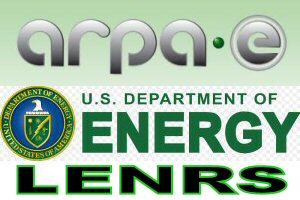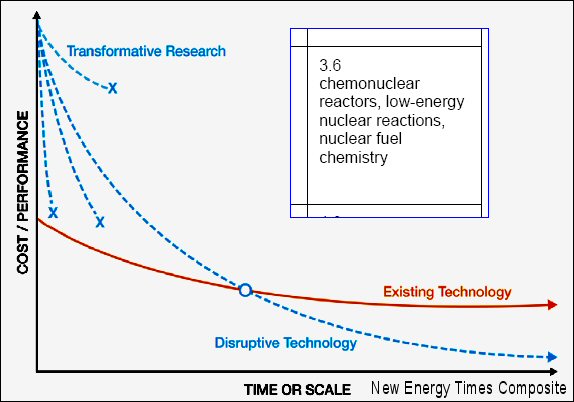U.S. Department of Energy Invites Submission of LENR Proposals

DoE Offers to Fund LENRS
Jan. 3, 2014 – By Steven B. Krivit –
New Energy Times has just learned that, on Sept. 27, 2013, the Department of Energy’s Advanced Research Projects Agency-Energy (ARPA-E) quietly announced a funding opportunity for low-energy nuclear reaction (LENR) research, among other areas.
This first-ever direct invitation from the Department of Energy for submission of proposals to fund this research marks a significant point in the field’s history. This is one of three recent shifts in the scientific establishment’s attitude toward this new field of science.
ARPA-E made its announcement in its “Funding Opportunity No. DE-FOA-0001002, CFDA Number 81.135,” at this Web site. The title of the funding opportunity is “Open Innovative Development in Energy-Related Applied Science (Open Ideas).” Here is a direct link to a PDF of the invitation. LENRs are listed in item 3.6 in Figure 3 on page 11 of 27 in the PDF.
ARPA-E’s Web site says that the agency “advances high-potential, high-impact energy technologies that are too early for private-sector investment.”
“ARPA-E awardees are unique,” the Web site says, “because they are developing entirely new ways to generate, store, and use energy.”
According to the announcement, ARPA-E will make a total of $10 million available for research through 20 awards of up to $500,000 each.

ARPA-E Image and Text: Description of transformational and disruptive technologies in terms of cost per unit performance versus time or scale. ARPA-E seeks to support research that establishes new learning curves that lead to disruptive technologies.
In 2004, a different branch of the Department of Energy, the Office of Science, entertained a review of the field. The review came at the request of several LENR researchers in the fall of 2003.
The two researchers who led the review, electrochemist Michael McKubre of SRI International, and Peter Hagelstein, associate professor of electrical engineering at the Massachusetts Institute of Technology, did not provide a comprehensive review of the field. Instead, McKubre and Hagelstein wrote a summary paper that heavily promoted the concept of “cold fusion” and promoted their own research.
They failed to convinced the reviewers appointed by the Office of Science that the field was legitimate science worthy of funding. The Department of Energy did not issue any formal invitations for proposals. (See related New Energy Times article “U.S. Department of Energy 2004 LENR Review — The Inside Story.”
The 2013 ARPA-E invitation follows two additional shifts in attitude as well as receptivity to the scientific foundation of LENRs, which is distinct from the idea of “cold fusion.”
One of the two shifts occurred in March 2012, when one of the most well-established nuclear physics institutions in the world, CERN, the European Centre for Nuclear Research, hosted a colloquium on LENR research. It was the first colloquium there on the topic since Martin Fleischmann spoke in 1989 about his and his colleague Stanley Pons’ discovery of room-temperature “fusion.”
The third shift occurred in November 2012, when the American Nuclear Society held a panel session on LENRs in San Diego, Calif. It was the first LENR session at an ANS national meeting since June 1998.
See also 2022 DOE ARPA-E LENR funding

